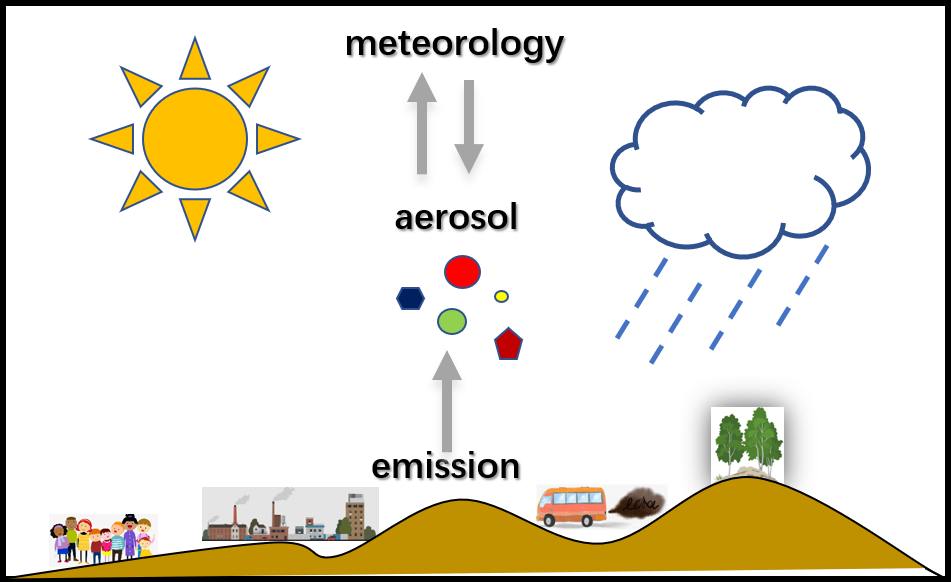Fog-haze Events in Beijing-Tianjin-Hebei Region during COVID-19 Lockdown Mainly Caused by Unfavorable Weather Conditions
Date:2021-03-10
At the end of December 2019, Coronavirus Disease 2019 (COVID-19) quickly spread throughout Hubei Province and other parts of China. During the 2020 Spring Festival, public activities were cancelled, people tried their best to stay at home, and human and industrial activities were reduced to a basic or minimum level. However, during this period, severe fog–haze events occurred over the North China Plain. What was the leading factor that caused these severe smog incidents? And what were the individual impacts of meteorological conditions and emission reductions?
To evaluate the impacts of meteorological conditions and emission reduction measures on the near-surface PM2.5 (fine particulate matter) during the COVID-19 lockdown, three numerical experiments with different meteorological fields and emission sources were carried out with a coupled meteorology and aerosol/chemistry model (WRF-Chem) by Professor ZHANG Meigen and his team from the Institute of Atmospheric Physics, Chinese Academy of Sciences, and the findings have recently been published in Atmospheric and Oceanic Science Letters.
The results of the study found that, compared with the same period in 2019, the PM2.5 concentration in the Beijing–Tianjin–Hebei region increased by 50–70 μg m-3 from 7 to 14 February 2020, during which time the daily average PM2.5 concentration in Beijing reached 175 μg m-3. Results from sensitivity tests showed that the main cause was that the increase in PM2.5 caused by meteorological conditions was greater than the decrease in PM2.5 caused by emission reductions.
"Higher temperatures and relative humidity usually hasten the formation of secondary aerosols by accelerating chemical reactions," explains Prof. ZHANG. "Meanwhile, the lower wind speed in the Beijing–Tianjin–Hebei region inhibits the diffusion of air pollutants and the lower planetary boundary layer height enhances atmospheric stability. These unfavorable meteorological conditions led to these haze events in the Beijing–Tianjin–Hebei region."
According to this study, it is necessary to consider meteorological conditions when assessing the effectiveness of emission control policies on changes in air pollutants. Doing so is likely to be very helpful for the formulation of future air pollution reduction policies.

Aerosol, emission and meteorology (Image by GAO Yi)
Citation: Zhang, Y.Q., Ma, Z.K., Gao, Y., Zhang, M.G., 2020. Impacts of the meteorological condition versus emissions reduction on the PM2.5 concentration over Beijing–Tianjin–Hebei during the COVID-19 lockdown. Atmospheric and Oceanic Science Letters, https://doi.org/10.1016/j.aosl.2020.100014.
Media contact: Ms. LIN Zheng, jennylin@mail.iap.ac.cn
